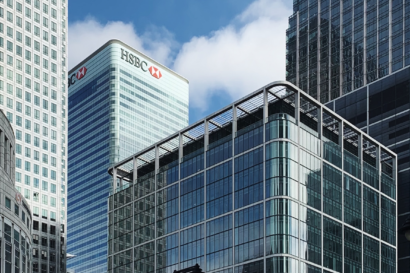AG INSIGHT | 25/10/2025
Why circular workplace fit-outs are gaining traction

Coinciding with Circular Economy Week 2025, Colleagues from JLL, Director, Sustainable Asset Services, Areti Makantasi and Associate Project Manager, Laura Wardrope, discuss the importance of, and growing momentum around circular practices in the commercial buildings sector.
As companies seek to meet sustainability targets and manage rising costs, circularity principles are shaping the way that office fit-outs are being delivered – maximising product and material value through waste reduction, reusing what’s in place and designing for future adaptability.
The existing model of stripping out what’s there and installing a new design – a cycle that’s repeated every few years as leases turn over – has a high carbon and financial cost. But transitioning towards circular fit-outs turns that model on its head. As such, businesses are increasingly being encouraged to view existing materials not as waste, but as assets – from joinery and partitions to furniture and fixtures.
The commercial benefits are increasingly clear. Reusing elements from previous tenants or refurbishing existing materials can significantly cut costs. In one case, savings of around 75% were achieved simply by retaining the outgoing tenant’s fit-out. In another instance, re-using furniture, fixtures and fittings saved a client over 40%.
Second hand doesn’t mean second best
However, despite the obvious environmental and financial benefits, the shift to circularity is currently limited, held back by a perception that second hand means second best. In reality, accessing secondary markets can also deliver higher quality products than originally specified. The lack of industry-wide transparency over second hand materials is also a barrier; if companies cannot source reusable products or find information on the material composition of reused products (and so assess against other requirements, such as WELL certification), it makes it difficult to embed circular thinking into the early stages of a project.
This is especially critical when it comes to dilapidations where, under traditional lease terms, landlords rip-out the existing fit-out, often regardless of condition, leading to unnecessary waste and cost. A circular approach would start with a fit-out that’s designed for future flexibility, with reuse built in from the outset.
From sustainability ambition to industry standard
As confidence grows and more projects deliver measurable results, circular fit-outs will move from a sustainability ambition to industry standard. Major occupiers are already starting to set targets for reducing their embodied carbon and waste, and some forward-thinking landlords are recognising the value in retaining quality interiors to attract incoming tenants. JLL has embedded these principles into our own UK corporate real estate, applying iterative learnings from previous fit-outs to our latest project at 1 Broadgate in London. Working with our landlord, British Land, we are delivering what we hope is a market-leading circular economy strategy. This includes an ‘urban mining’ process to assess and reuse existing materials, a circular procurement approach for new items and the introduction of Material Passporting. This creates a digital record that stays with a product throughout its life, acting as a key enabler for future reuse and supporting the transition to a truly circular economy.
While the infrastructure to support a fully circular system is still evolving, platforms that track available reused materials are beginning to scale, helping bridge the supply gap. However, for the market to mature, policy support is needed to address systemic challenges. The UK could learn from the EU and introduce digital product passporting legislation to tackle the fragmented reuse marketplace, standardise material classification and improve the reliability of product information.
In the meantime, incremental progress can make all the difference. Even keeping a single component or rethinking how materials are sourced can have a meaningful impact on waste and costs, pushing the concept forward; and the more that circular practices happen, the more people will become comfortable with the idea. Successfully moving to this circular model depends heavily on early planning, team alignment and stakeholder ‘convincing’ – from leasing and sustainability to design and project delivery – but also requires a fundamental shift in culture and mindset that extends beyond design decisions to how delivery teams approach procurement, risk management and programme delivery. Getting this right could mark a major shift in how workspaces are designed and managed.
The most effective projects treat fit-outs not as end products but as part of an ongoing loop, where today’s design informs tomorrow’s disassembly and reuse. It’s an approach that reflects the changing world of work and the growing demand for spaces that are not just functional, but future-proof.
#CEweek2025



